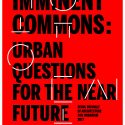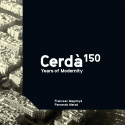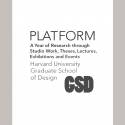Your Cart is empty
Imminent Commons: Urban Questions for the Near Future
Seoul Biennale of Architecture and Urbanism 2017
Alejandro Zaera-Polo, Hyungmin Pai, urbanNext (eds.)
Imminent Commons, first book from the Seoul Biennale 2017, will present an imminent urban cosmology that is crucially mediated by the technologies and institutions that feed us, move us, condition our environments, recycle our refuse, make our clothes, and connect us into communities.
The cities of the world stand at a crossroads. Amidst radical social, economic, and technological transformations, will the city become a driving force of creativity, diversity, and sustainability, or will it be a mechanism of inequality, despair, and environmental decay? At this critical moment, where do the stakes lie and what are the agents of change? From the time of its birth, the city has been held together by the commons.
The first publication of the Seoul Biennale of Architecture and Urbanism 2017, proposes a framework where set basic commons —an evolving network of agencies, resources and technologies— as the critical issue in the move towards a sustainable and just urbanism. It shows an exploration not of distant utopias, but of the very near future, because the emerging commons is changing the way we connect, make, move, recycle, sense, and share, and the way we manage air, water, energy and the earth. Whether met with fear or hope, they will very soon change the way we live in the city.
With contributions of:
Alejandro Zaera-Polo, Hyungmin Pai, Maider Llaguno, Nerea Calvillo, Hyewon Lee, Lindsay Bremner, Alex Ivancic, Iñaki Abalos, Charles Waldheim, David Gissen, Carlo Ratti, Daniele Belleri, Saskia Saseen, Adam Greenfield, Jesse LeCavalier, Philip Rode, Duncan McLaren,, Jennifer Gabrys, Julian Agyeman, Gunter Pauli, Gramazio and Kohler, Mario Carpo, Dirk E. Hebel, Marta H. Wisniewska, Felix Heisel, Mitchell Joachim, Christian Hubert.
EBOOK EDITION













